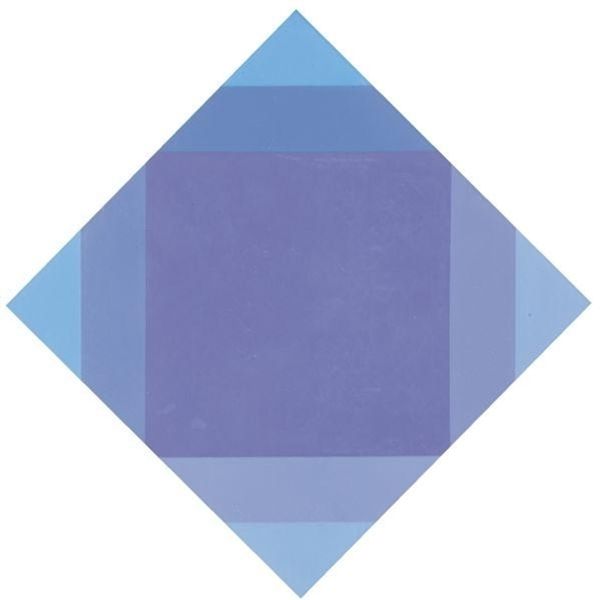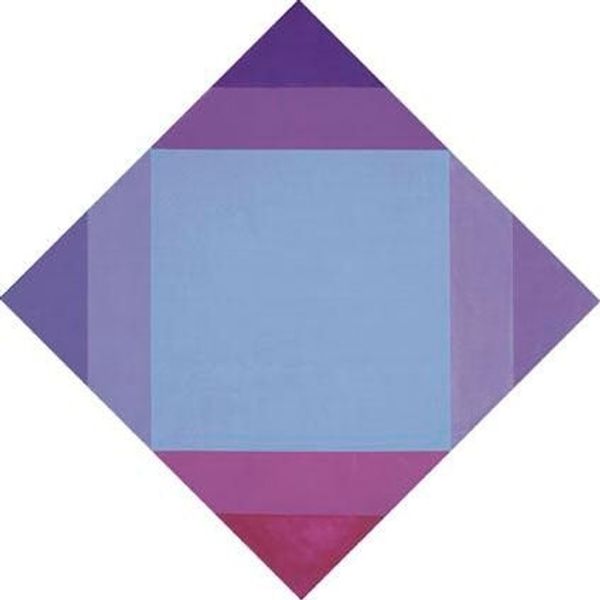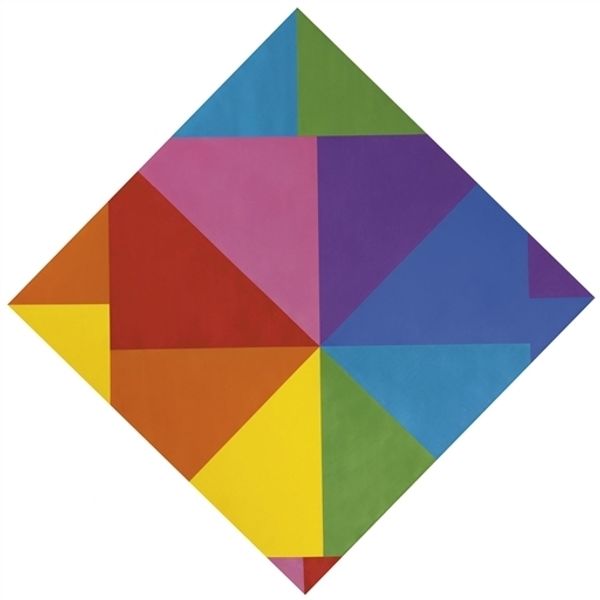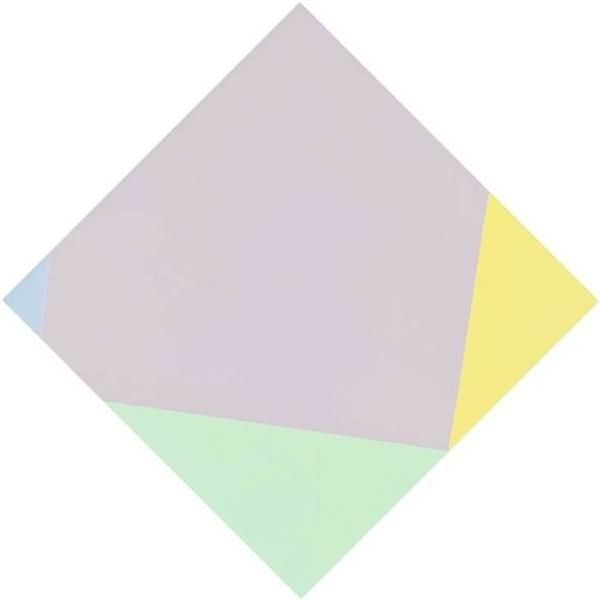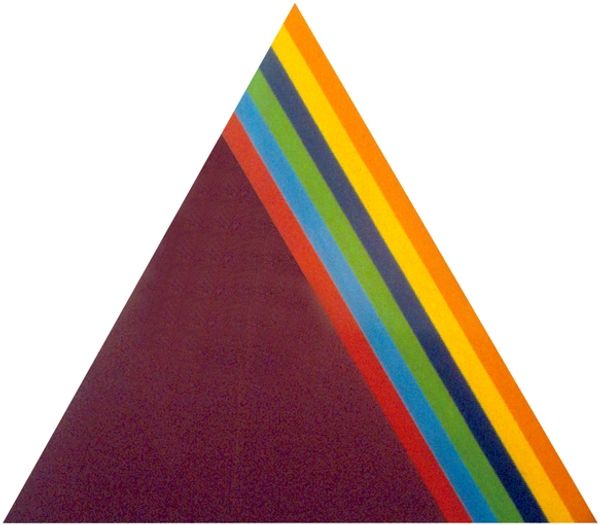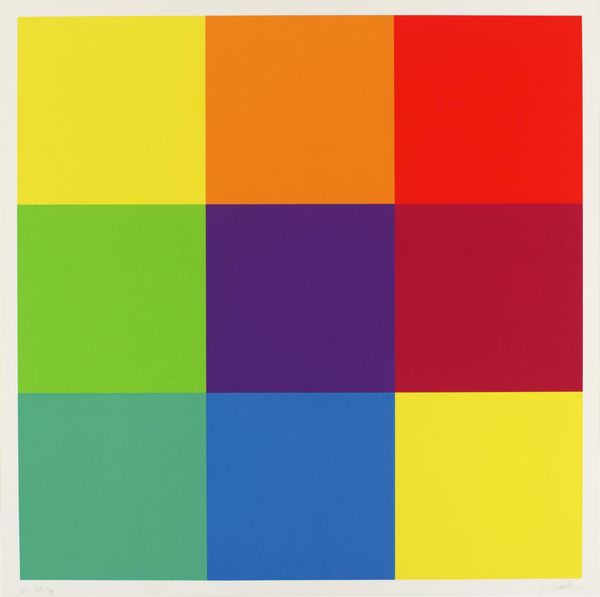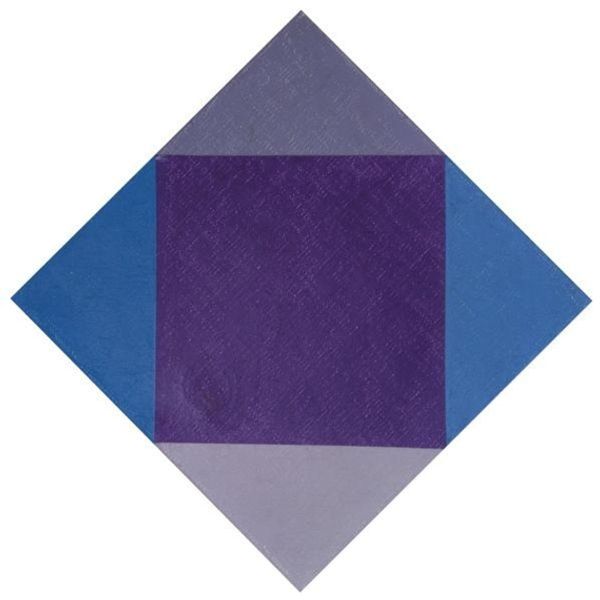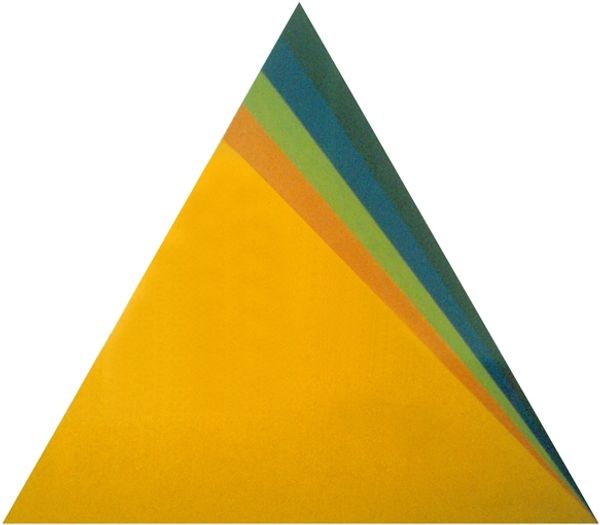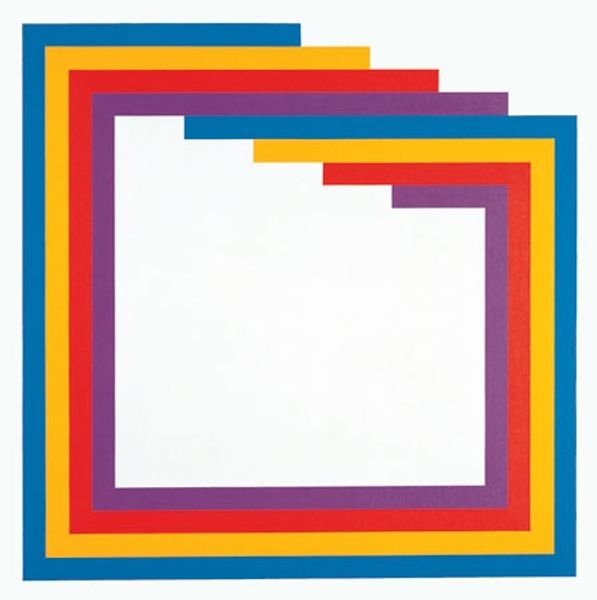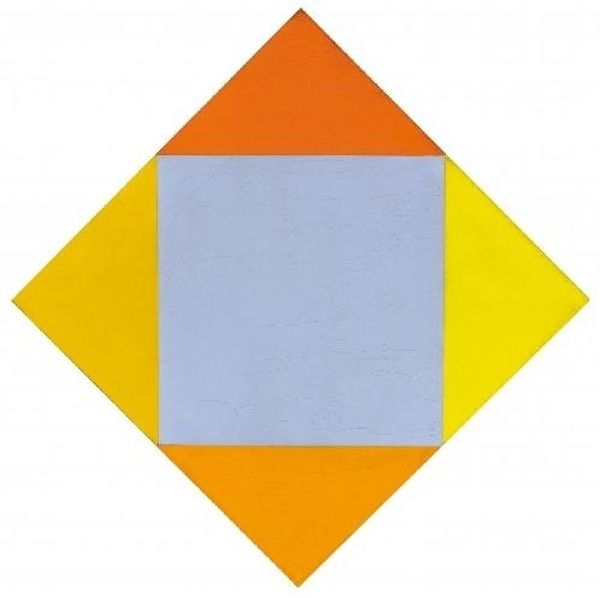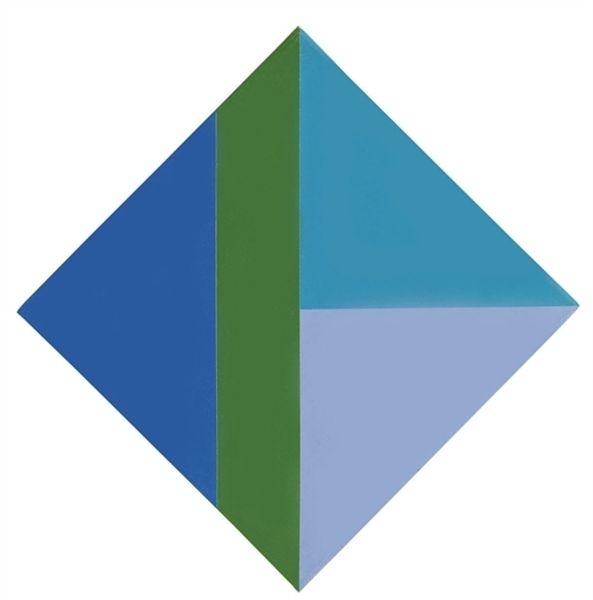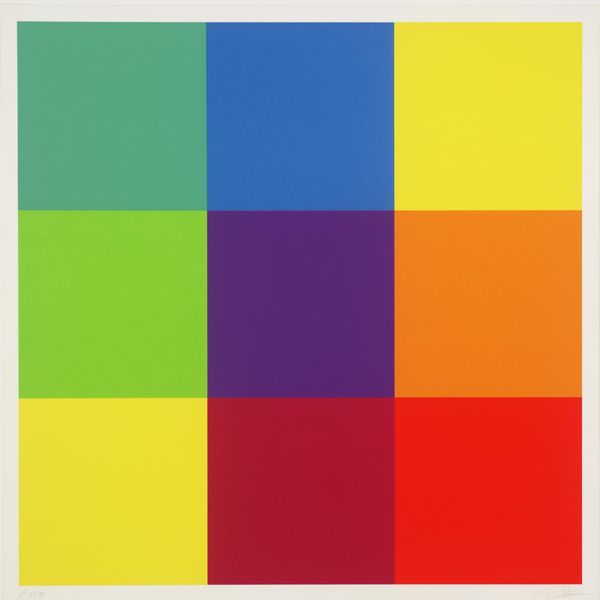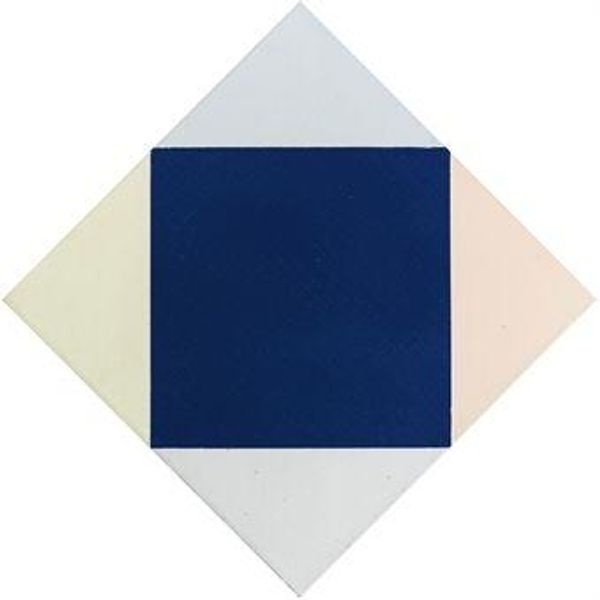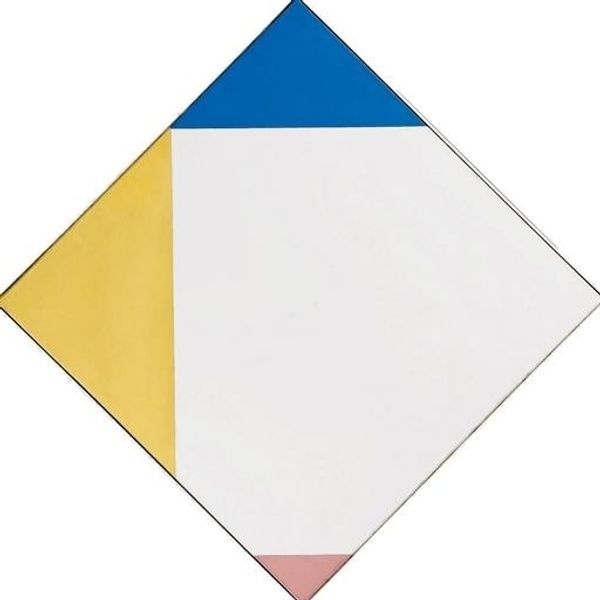
acrylic-paint
#
op-art
#
pattern
#
op art
#
colour-field-painting
#
acrylic-paint
#
geometric pattern
#
geometric
#
abstraction
#
hard-edge-painting
#
orange
Copyright: Max Bill,Fair Use
Editor: Here we have Max Bill's "Aus violettem kern" from 1967, rendered in acrylic. The geometric simplicity, with the canvas itself a rotated square divided into four colored triangles, is striking. What exactly am I looking at here? Curator: Well, you're looking at more than just triangles of paint, you're seeing a physical manifestation of postwar optimism about industrial production. Bill, a key figure in concrete art, aimed for objective beauty, reflecting the functionality and rationality prized in modern design and manufacturing of that time. Editor: Modern design, yes. The choice of acrylic feels crucial; wouldn't oil create a different impression, a more, dare I say, romantic mood? Curator: Exactly! Acrylic, being synthetic, allows for this flawless, machine-like finish. It aligns with the broader social shift towards mass production and standardization. No brushstrokes, no painterly emotion. What’s being presented is purely form and color, stripped of artistic gesture. What do you think about the color scheme here, does it strike you as accidental? Editor: No, but could it reflect, perhaps, the chemical dye industry exploding in those decades? The colours aren’t ‘natural’ in any obvious way, that orange feels like a total fabrication. Curator: That's an astute observation. It isn’t about representing anything pre-existing; instead, it creates something wholly new, divorced from the history of representation. Think about the labor involved: not the skilled hand of a traditional artist, but the repetitive processes in factories, reimagined as an aesthetic principle. The hard-edge style too reinforces the impersonal aesthetic, a key link with serial manufacturing. Editor: I hadn’t thought about the sheer artifice involved... that the industrial context isn't some outside influence, but is the point of the work. Curator: Precisely. By questioning the art's materials and the methods behind production we gain insights into how its creation interacts and reflects changes within a society! Editor: I’ll certainly be looking at abstract works with a renewed focus on their making from now on. Curator: Indeed, examining material realities helps unravel layers within.
Comments
No comments
Be the first to comment and join the conversation on the ultimate creative platform.
